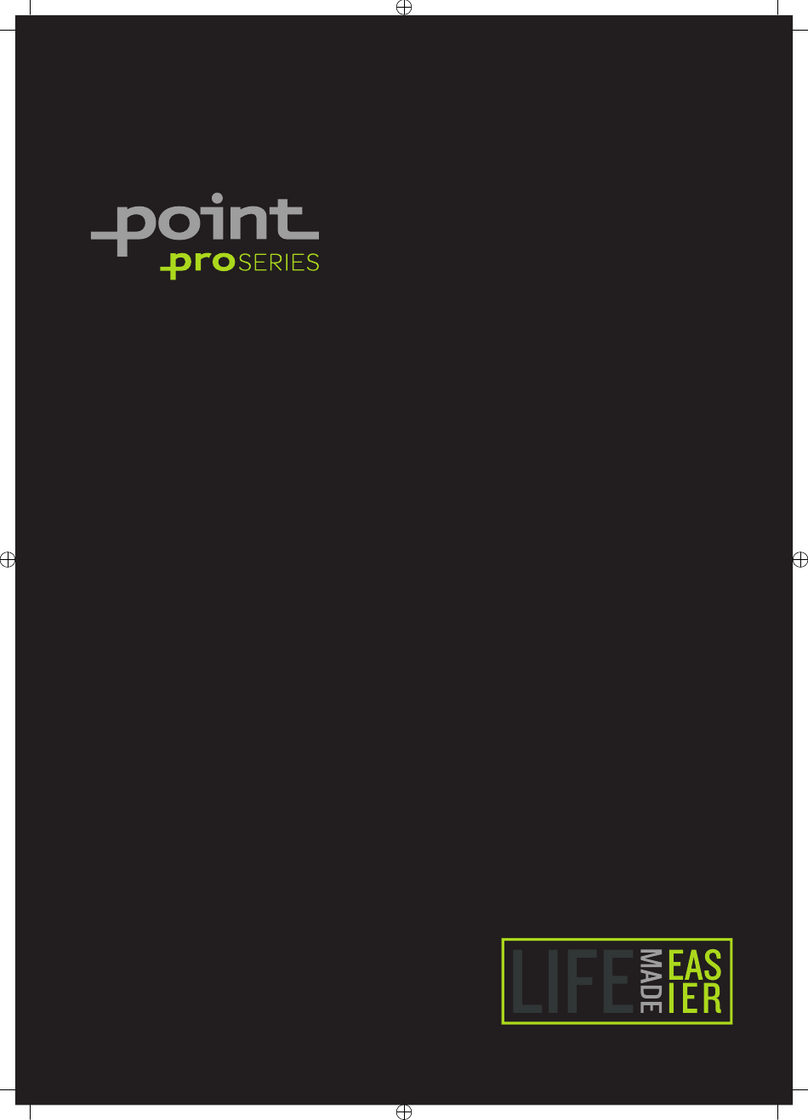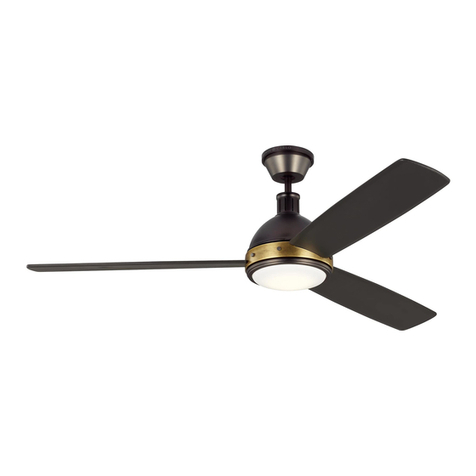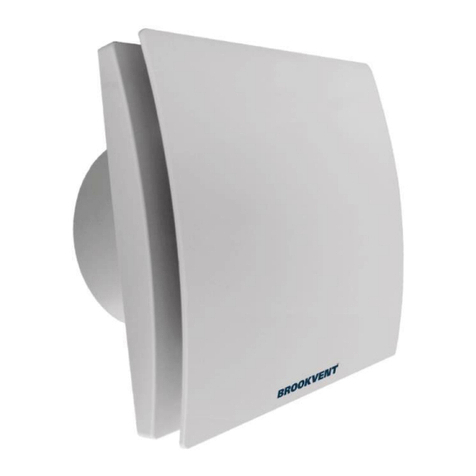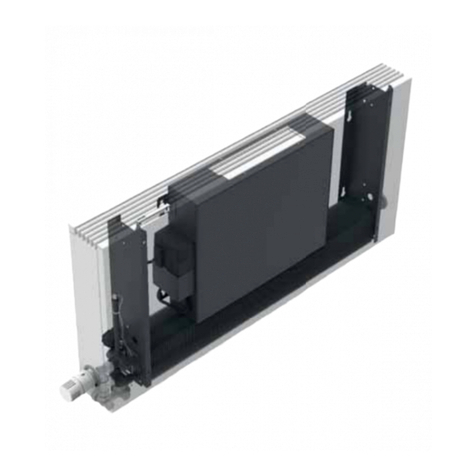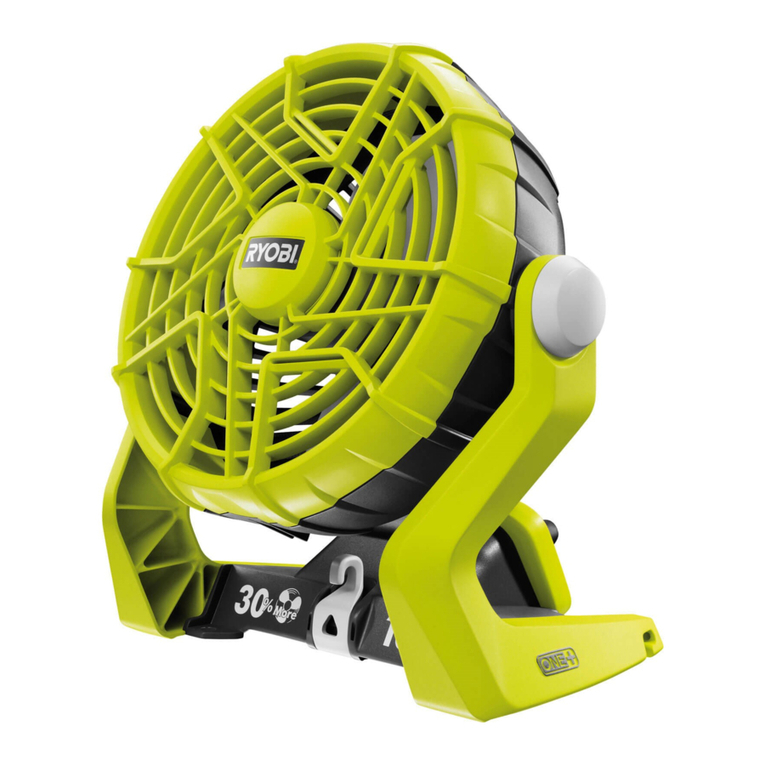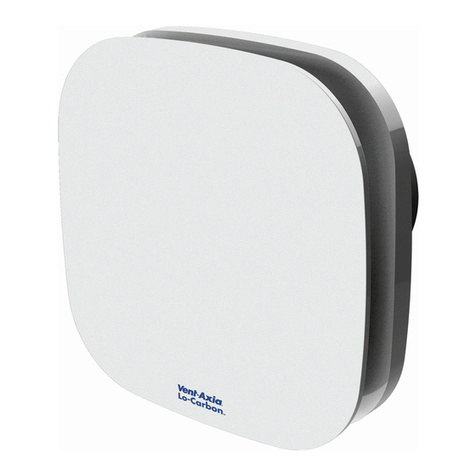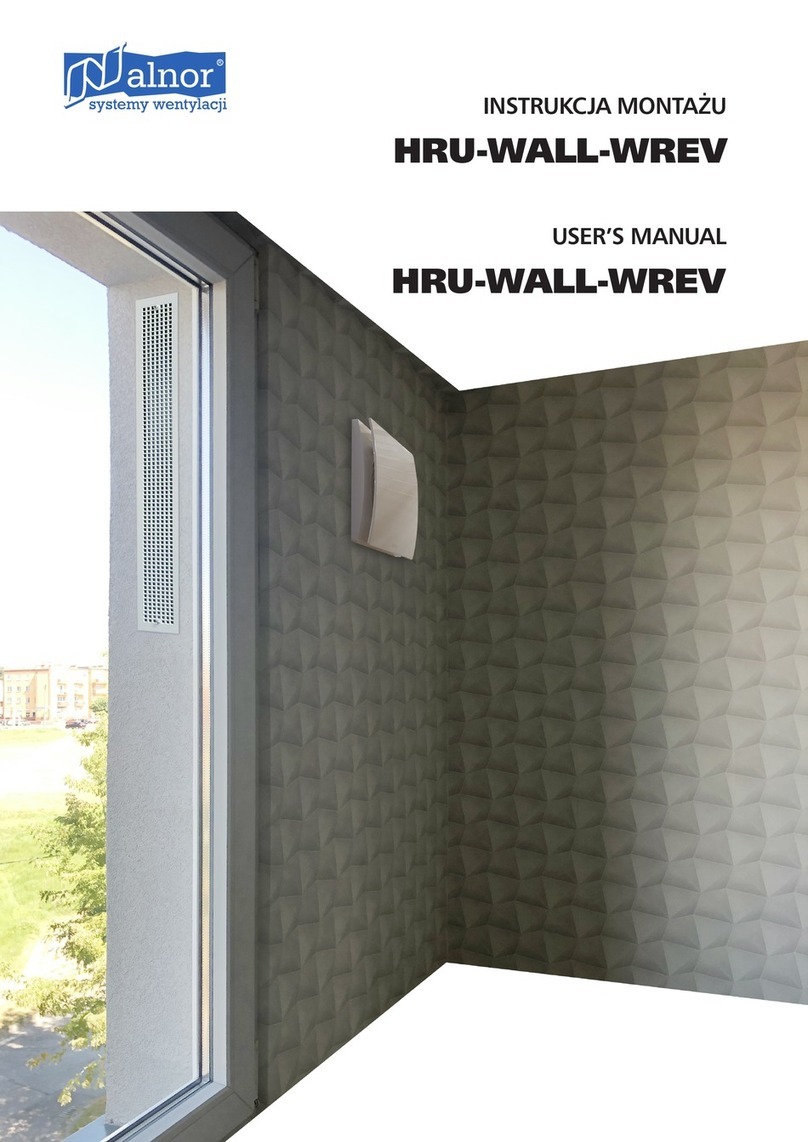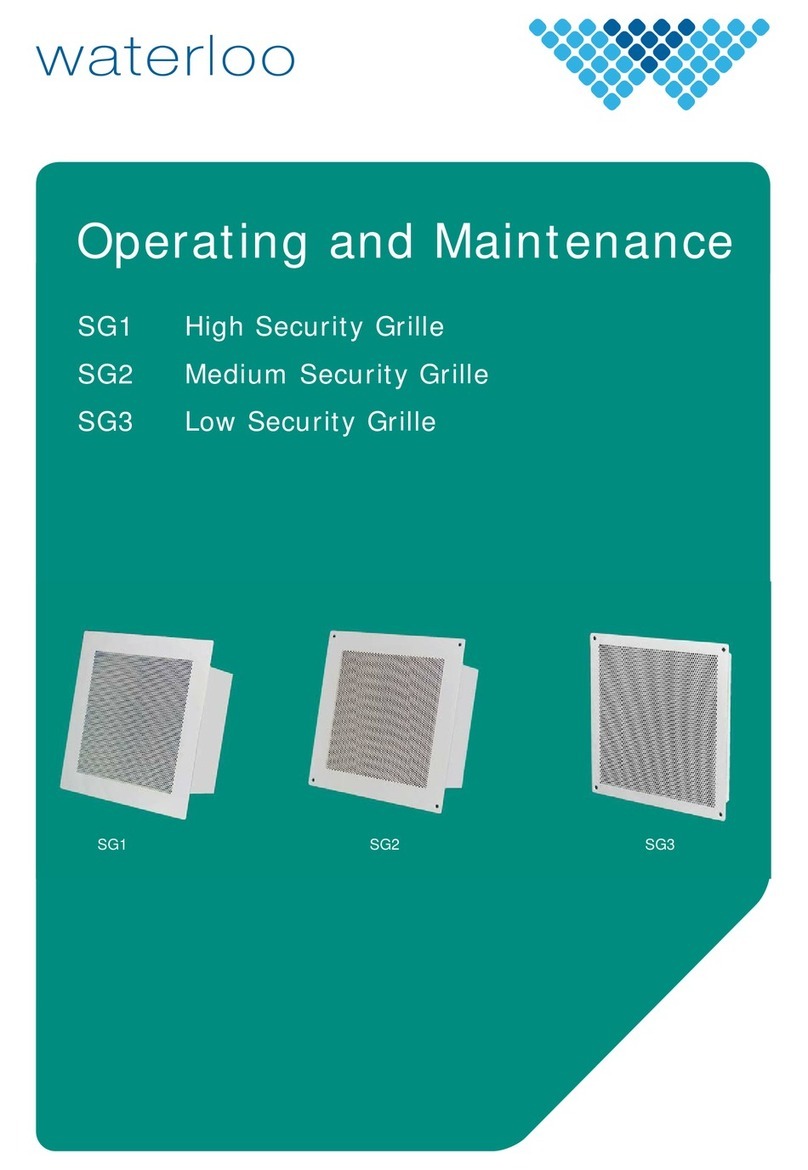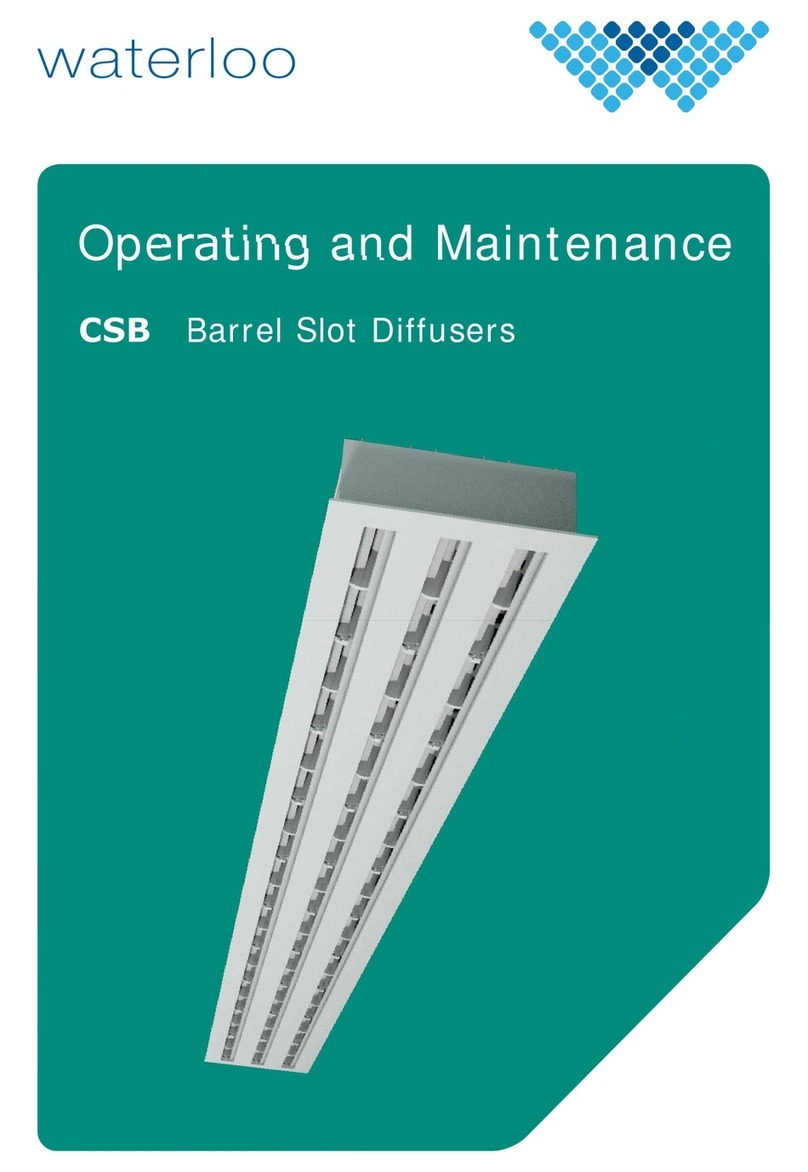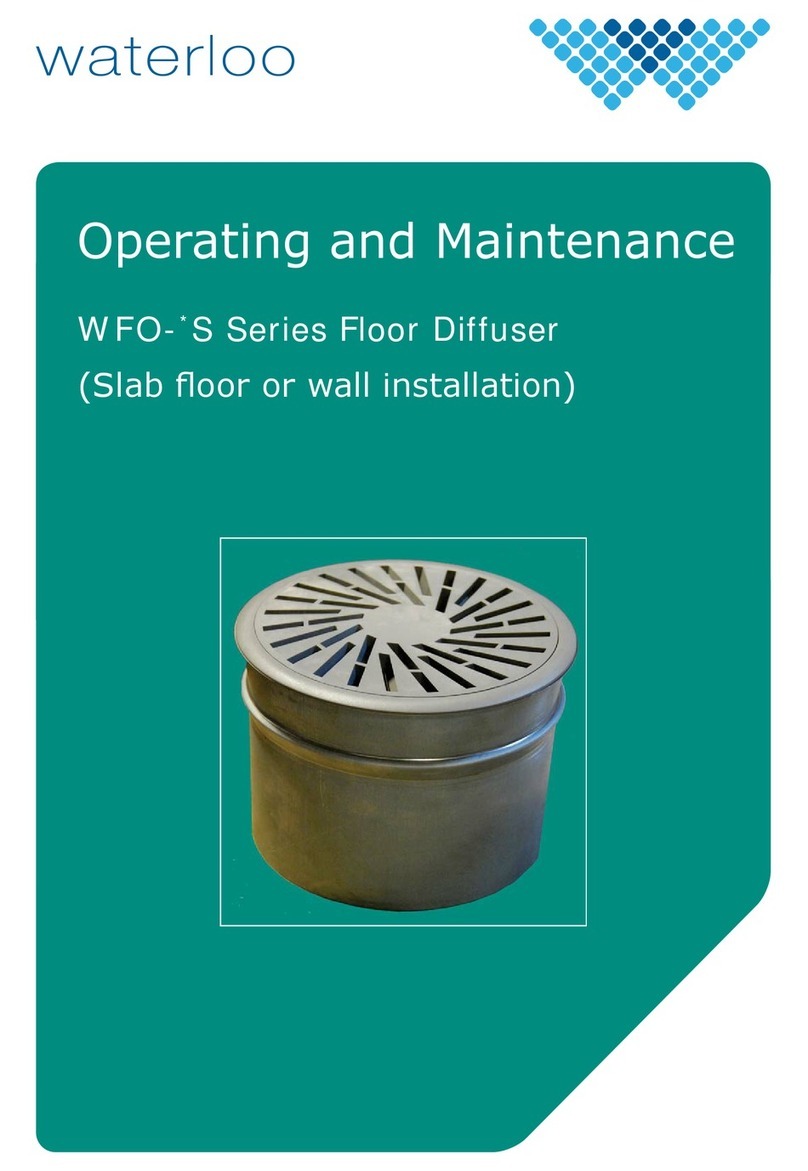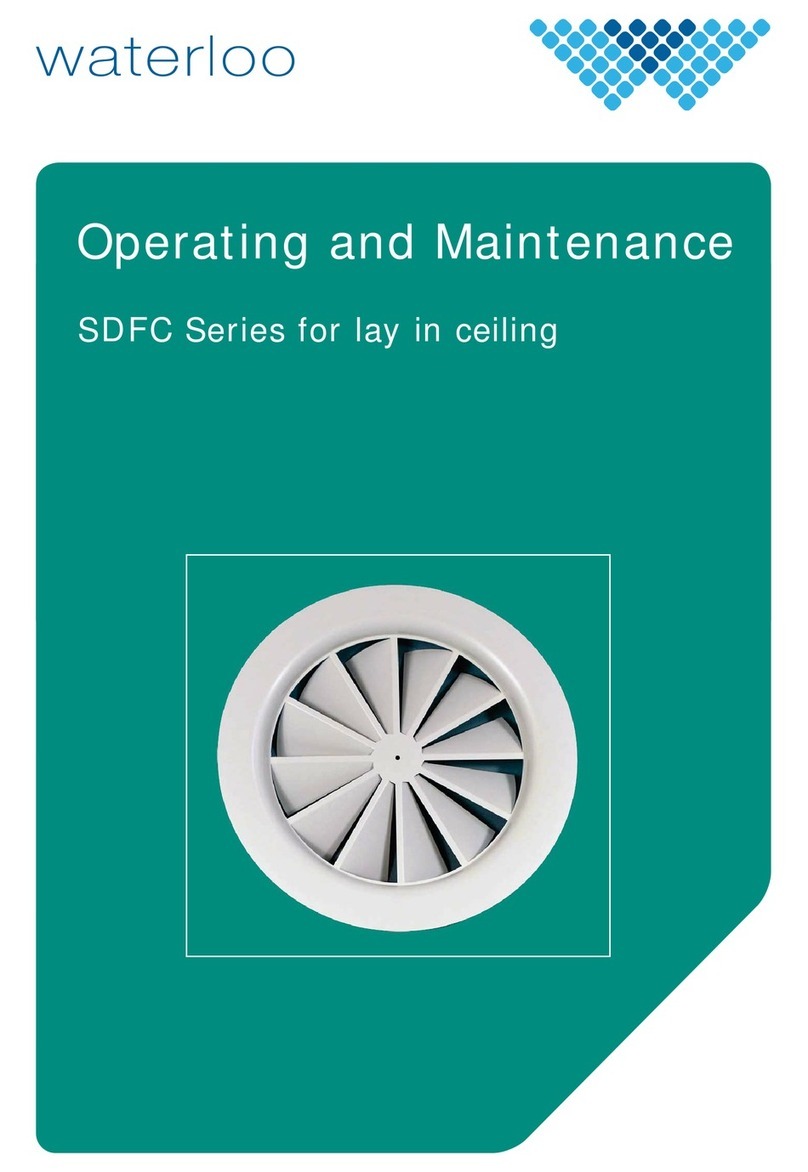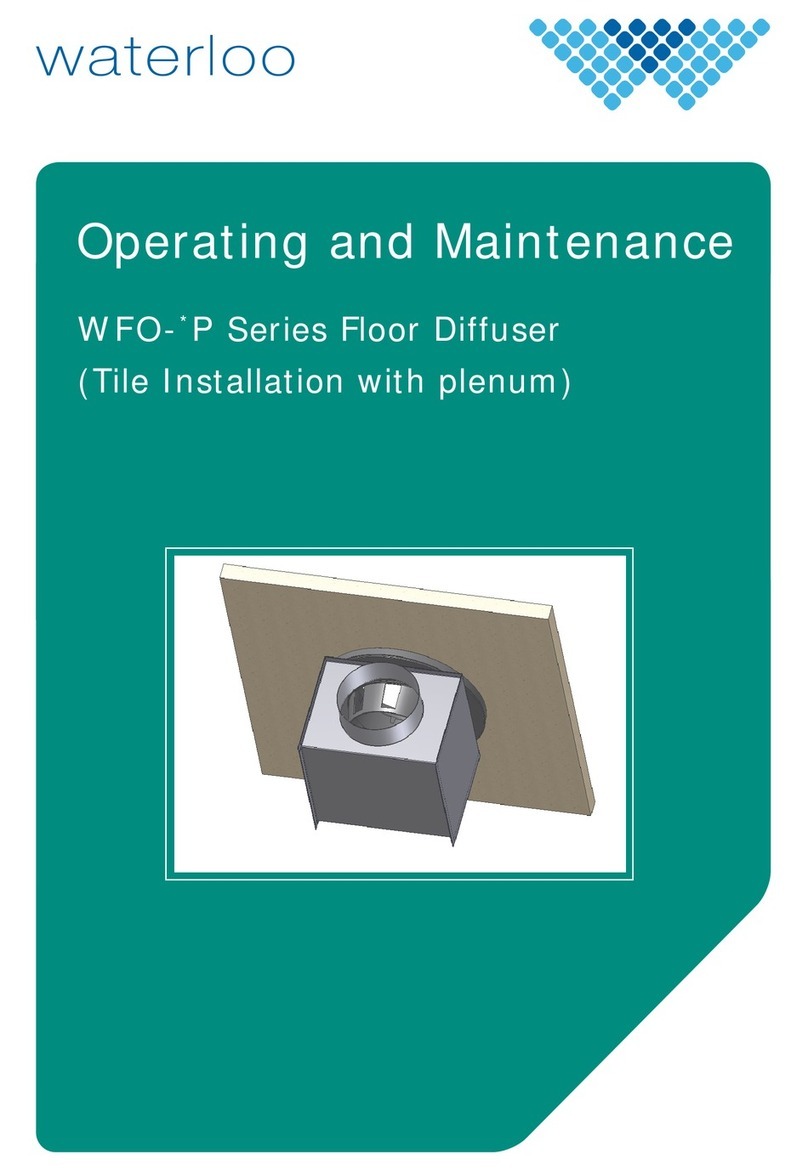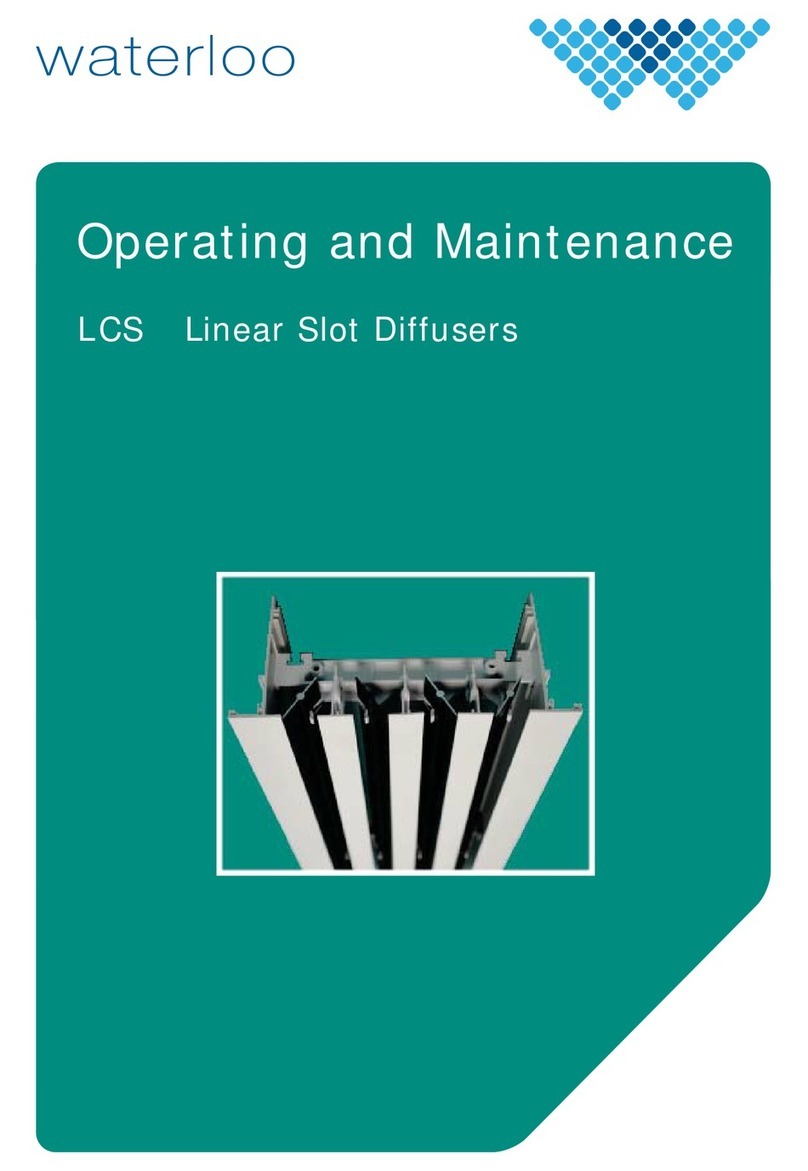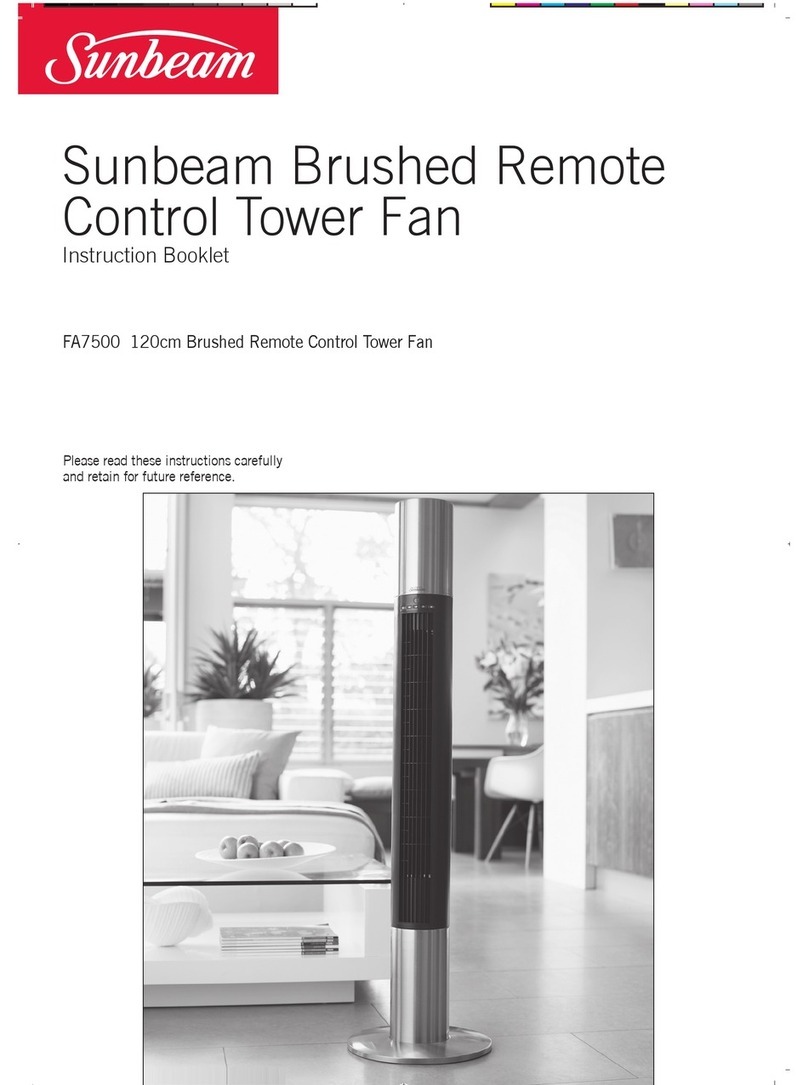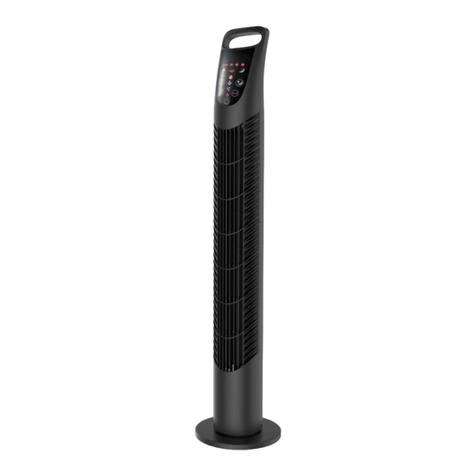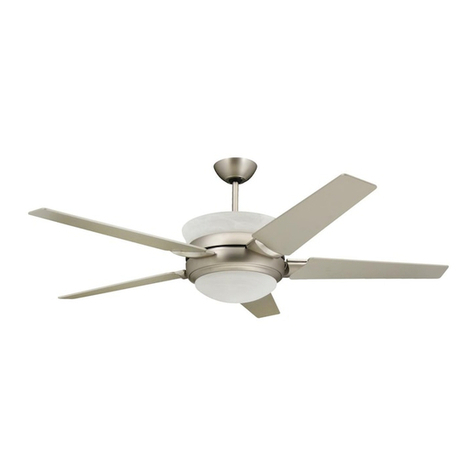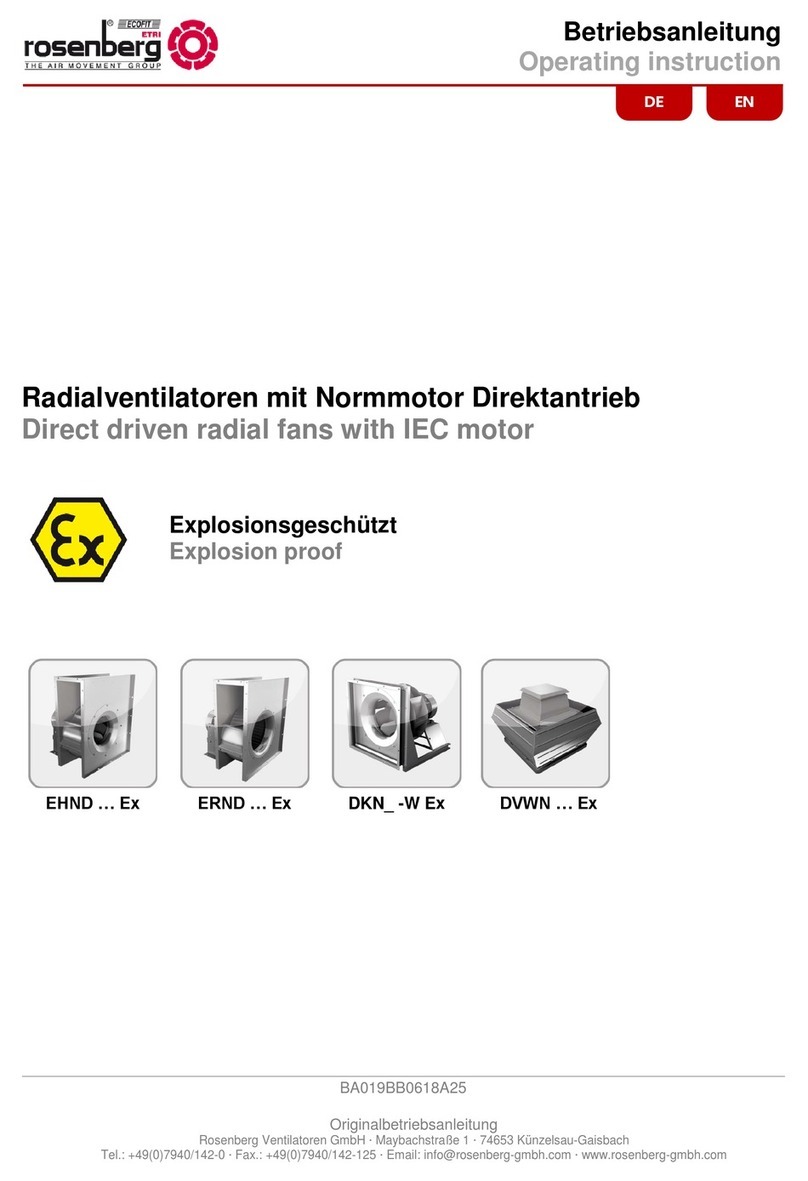
3
Waterloo Tel: +44 (0) 1622 717861
Operation and Maintenance Instructions
WVSV / WLM / WR
Selection
VAVs are variable air volume devices. Their intended function is to change the volume of air delivered into a
room most typically in response to demand established by thermostats or building management systems. The
VAV is controlled using a damper driven by an electrical actuator. The actuator uses either a 0-10v or 2-10v
signal to position the damper to achieve the desired air volume.
In a typical system the design air volume is that at maximum load in the room. This volume is the effective
maximum and as a rule this is known as Vmax.
If the system uses a turn down ratio to establish the minimum value at which the ATDs will operate effectively
this is typically, but not exclusively, limited to 50% of Vmax. For regulating systems where there is no specied
turn down ratio the minimum operating volume is determined by the capacity of the selected VAV.
VAV capacity is governed by the size nominally of the unit. The capacity is referred to as Vnom and represents
the volume of air at 10m/s velocity through the unit. The standard method of selection would aim to use a
Vmax of no more than 80% of Vnom (ie 8m/s through the unit) If this is not possible, Vmax should be no less
than 40% of Vnom (ie 4m/s through the unit).
Where a 50% turn down is not specied, for best practice, Vmin should be limited to 30% of Vnom or 3m/s
through the unit. The absolute limit is 20% of Vnom or 2m/s. It is not possible to calibrate the actuator to
operate at lower velocities, and therefore to improve accuracy and the level of controllability use the 30%
Vnom value wherever possible. The only alternative is to use the 2–10v range and to set the 2v at zero ow.
Setting 0v at zero ow is not permitted.
Installation
Correct duct entry conditions are extremely important for ensuring that a VAV performs as intended. The
VAV must be mounted a minimum of 2 hydraulic diameters of straight ducting from any device. Any variation
from these inlet conditions will result in a deviation from the calibrated ow range specied at time of order.
In such instances the actuators will need to be recalibrated on site. It is the responsibility of the customer to
resolve such issues.
Connection
Note the ow direction indicated on the product in relation to the installation requirement. Mount the VAV
noting the location of the actuator for easy access. Connect the round and rectangular duct for WVSV, for WR
connect the round duct and for WLM connect the rectangular duct sections as per accepted standard practice
taking care not to damage the ow sensor connections on the spigot.
Please ensure that the pressure connections to the actuator are secure. All VAV unit actuators supplied as
original equipment are precalibrated in the factory to the customer required settings in accordance with the
product selection criteria.
The Belimo actuator wiring and control information is provided by the addendum of this manual for use by
the controls engineer. The standard LMV-D3 actuator is self contained. The Waterloo ow sensor provides the
differential pressure signal used by the Belimo actuator to position itself in accordance with the calibration.
Any additional instrumentation or controls fall outside the scope of this manual
Maintenance
To clean, use warm soapy water and a damp cloth. Wipe down the internal and external surfaces and leave to
dry. For any control circuits and instrumentation tted to the unit use proprietary and approved aerosol de-
dusters only. The VAV does not require on-going maintenance other than to ensure that the pressure signal
tubes are in good condition and are secured at both ends.
Should a fault occur with the actuator then it can be replaced with an identical precalibrated unit. Should it be
neceessary to reassign the ow range of the VAV within the allowable scope of the unit then the actuator can
be recalibrated using the appropriate instrumentation.

